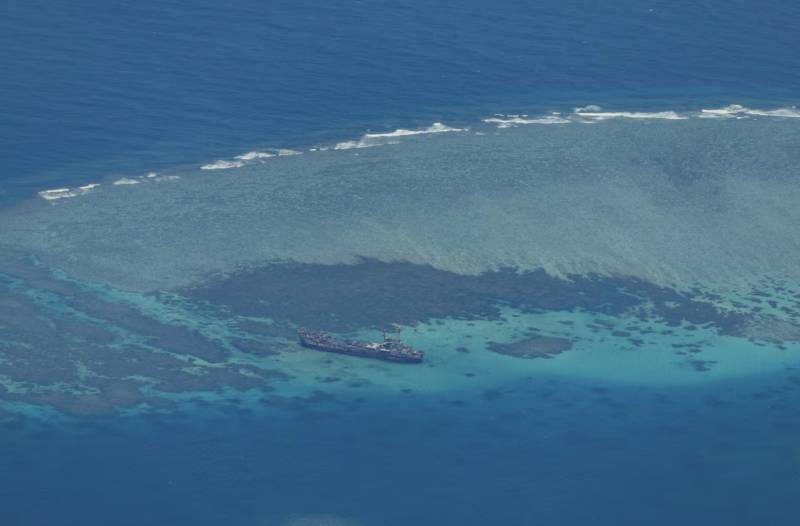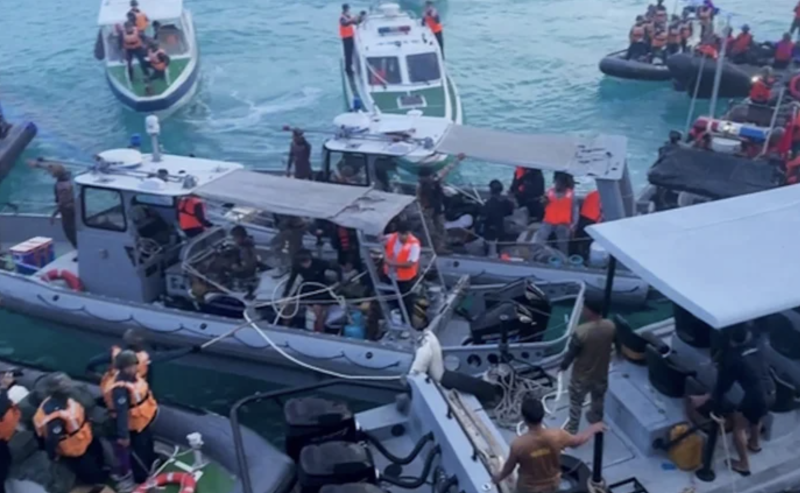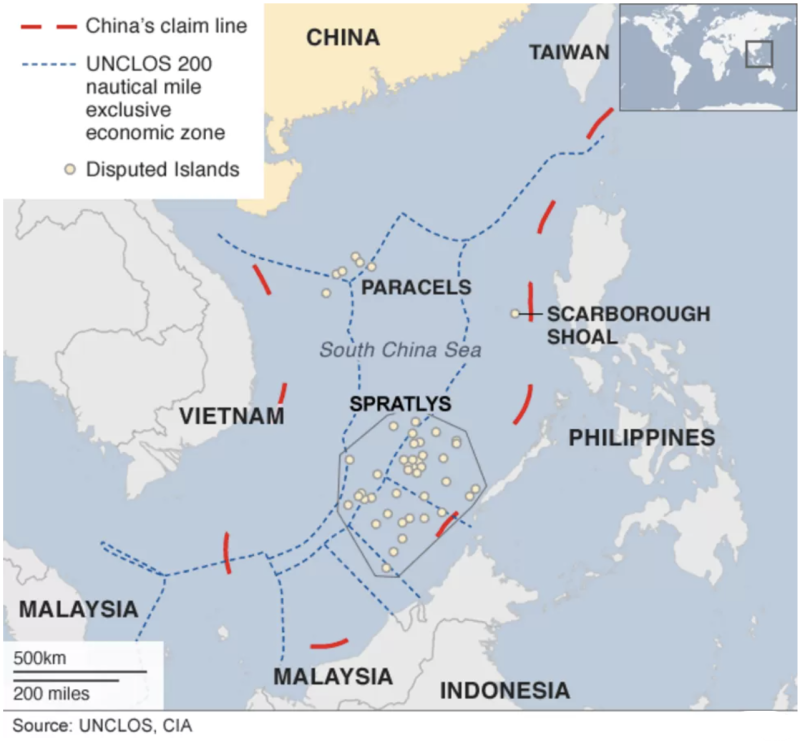
China and the Philippines are in the midst of a clash over control of the Second Thomas Shoal in the Spratly Islands, in the South China Sea. The latest skirmish involved a collision between a Chinese coast guard vessel and a Philippines supply vessel.
What is the recent incident?
A Chinese Coast Guard ship and a Philippines supply vessel collided in the South China Sea near the Second Thomas Shoal of the Spratly Islands earlier this week, where a deliberately marooned Philippines Navy ship named the BRP Sierra Madre serves as a remote outpost to enforce the Philippines’ territorial claim.

The Philippine Navy maintains that the Chinese vessel rammed the Philippine boat in the standoff on June 17, and Chinese coast guard personnel boarded the vessel armed with swords and spears. The Philippine vessel was delivering supplies to the Filipino sailors stationed on the grounded ship. Multiple Philippine personnel sustained injuries, with one sailor reportedly losing a thumb.
The United States issued a warning stating that it would defend the Philippines, under a mutual defense treaty signed in 1951.
Both China and the Philippines have pinned the blame on the other for the incident.
What is the original dispute in the South China Sea?
China, Vietnam, the Philippines, Taiwan, Malaysia and Brunei all make competing claims over territory in the South China Sea. The flashpoints for these disputes are the Paracel and the Spratly Islands, which are either claimed in whole or in part by a number of claimants.
The South China Sea is one of the world’s most important commercial shipping routes, and the UN’s Conference on Trade and Development (UNCTAD) estimates that nearly 20% of all global trade transits through the waters of the South China Sea. The area is also a rich fishing ground, with nearly half of the world’s maritime fishing fleet operating in the area at multiple points during the year.

China lays claim to the largest proportion of the territory, in an area demarcated by what it calls the ‘Nine-Dash Line.” China claims that the Paracel and Spratly islands have historically been part of Chinese territory, whereas international law as per the UN Convention on the Laws of the Sea (UNCLOS) allows a nation-state to only claim territorial waters 200 miles from shore as part of an Exclusive Economic Zone (EEZ).
In 2016, an international tribunal in The Hague ruled in favor of the Philippines in a maritime territory dispute, and backed Manila’s claim that China’s claim to sovereignty over the bulk of the South China Sea has no historical precedent or legal basis. Beijing chose to boycott the proceedings, calling the ruling “ill-founded” and has since largely ignored it.
Why is this dispute over some islands a cause for concern?
A string of confrontations has occurred over territorial claims to the Paracel and Spratly islands, and experts believe that an escalation in the South China Sea could serve as the flashpoint for a wider global conflict, particularly between the US and China.
Will this skirmish spill over or escalate?
The Philippines claimed on June 21, Friday that it has no plan to escalate the matter or to invoke a mutual defense treaty with the United States.
The Philippine military deemed China’s conduct akin to piracy, and has demanded that China compensate for the damage caused during the incident. General Romeo Brawner Jr., the Chief of Staff of the Philippines armed forces, claimed that “We are demanding that the Chinese return our rifles and our equipment and we’re also demanding that they pay for the damage they caused… They boarded our boats illegally and seized our equipment. They’re now like pirates with this kind of actions.”
